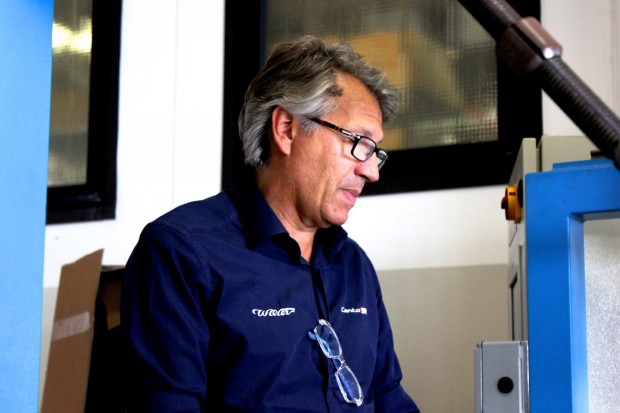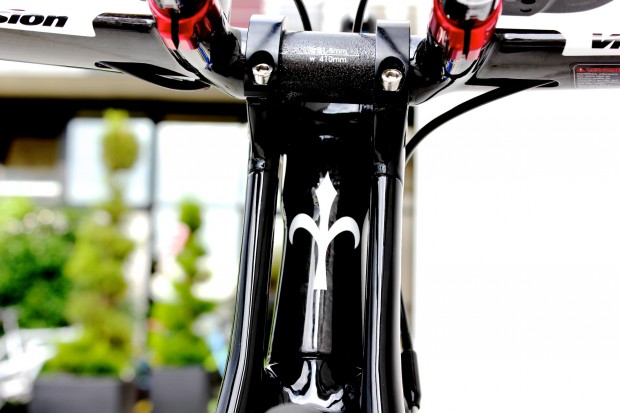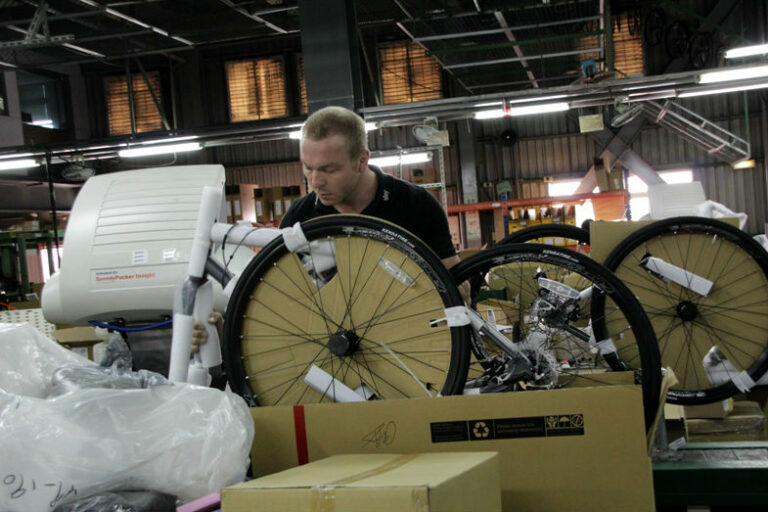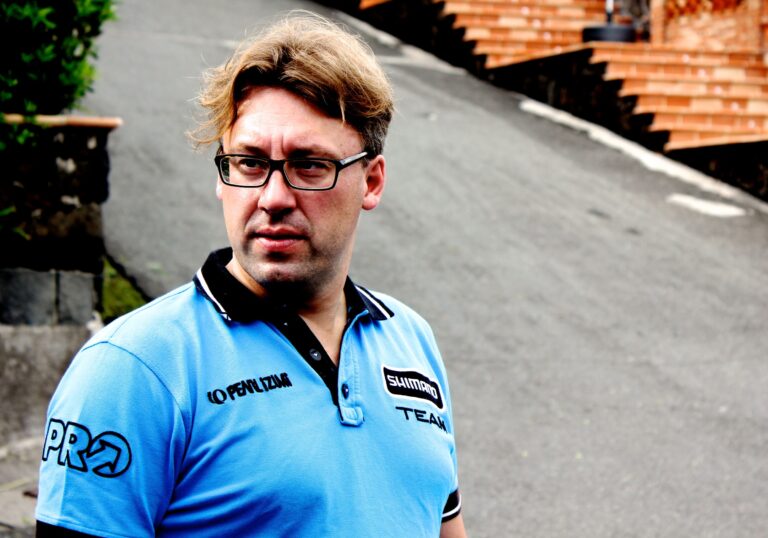Heritage is a marketable concept, understood by anyone with a commercial interest in spreading the belief among its customers that they are buying a product shaped by the experience of generations. Just a handful of companies in cycling have any entitlement to claims of a glorious past, however. Wilier is one of them.
Founded 107 years ago by Pietro Dal Molin in Bassano del Grappa, the company now resides at a sizeable and modern facility in Rossano Veneto, in the heartland of the Italian cycle industry, where there are others – notably Campagnolo, but also Basso, Selle Italia, and Pinarello – with a justifiable claim to an enduring passion for the bicycle.

The factory at Rossano Veneto provides an impressive tribute to Wilier’s decades of success, with restored editions of the copper coloured steel bicycles with which the brand became synonymous in the years immediately following the Second World War on the ground floor at the entrance to the building. The showroom upstairs contains more recent emblems of success: the steeds of Pantani, Petacchi, and Ballan stand silently beneath a collection of framed jerseys to rival any.
Claudio Salomoni, Wilier’s international sales manager, is a man with his own, 25-year history in the cycle industry. Born in Treviso, he began his career in the cycle industry, almost inevitably, with the local firm, Pinarello, for whom he worked for 16 years, before joining Wilier nearly a decade ago. During his time at Rossano, Wilier has issued the super lightweight Zero 7, the radical Twin Blade time trial bike, and the SR and AIR iterations of its Cento 1 racing bike. Salomoni’s opinion on the latest debates in cycling technology are therefore worth seeking.
The beautiful contradiction that lies at the heart of Wilier is that the brand with the ultimate history, including overall victory in the 1948 Giro d’Italia with the legendary ‘third man’ of Italian cycling’s greatest era, Fiorenzo Magni, is the constant desire for the new. A reproduction of the copper coloured steel steeds did not sell, Salomoni says bluntly. The bicycles that have shaped Wilier’s past share space in the showroom with those that Salomoni and his employers, the Gastaldello brothers, hope will define its future, including a prototype, disc-equipped version of the Cento1 race bike.
Salomoni believes hydraulic disc brakes for road bikes make sense only for two markets: the commuter, especially those in wet countries, seeking a robust system and reliable braking, and “the high end”. For mid-market machines, he says, it makes sense only as a device to satisfy the passion of those who want it, rather than to meet any technical need.

Another machine occupying space in the showroom with a Cento1 ridden by l Piccolo Principe, Damiano Cunego, another Venetian and Giro winner, is the Twin Blade, dressed in the colours of Team Colombia, the Pro Continental squad that lit up this year’s Italian national tour. The radical fork that gives the bike its name is more emblematic of the thinking at Wilier than the jersey collection. The past is the past, is the sub-text of Salomoni’s answers; now bring on the future.
The Twin Blade is certainly futuristic, and crucially for a brand with such an intrinsic connection with professional cycling, is UCI compliant. Salomoni offers a simple explanation: “When we designed it, we wanted our riders to be able to use it.” The fork, in which the legs are integrated into the stem either side of the head tube offers massively improved airflow around the bike’s leading edge. “This type of fork is the stiffest you will find on the market. You are not able to bend any millimetre,” Salomoni says proudly. “For a bike that must be ‘driven’ by your elbow, it is a big plus. It might be a little be harsh, but for a bike that you ride for 30, 40, 50km, it is the perfect fork.”
Many may be surprised that such a radical design gained UCI approval. The governing body’s technical regulations have been criticised as being unnecessarily restrictive, and which have, in the case of the new hydraulic disc brakes from Shimano and SRAM, placed technology in the hands of the amateur denied to the professional.
Salomoni is philosophical. Better a guideline that everyone has to adhere to than none at all, he argues. The UCI’s reasoning for technical regulation – that sporting achievement remains an athletic triumph, not a technical one – is sound, he says. He is in favour of reducing the minimum weight limit from 6.8kg, such is the strength of contemporary carbon frames, but he seems unconcerned by other stipulations, such as the double triangle frame design, and the necessity of a seat-tube. “There is enough space to do something different,” he concludes.

“Something different” increasingly means closer integration of the frame and components, a trend with obvious aesthetic advantages and greater aerodynamic performance. The French company, LOOK, is generally regarded as occupying a position at the leading edge of the trend (witness the 695 AeroLight), and it comes as little surprise when Salomoni offers them as an example. Perhaps it his commercial instinct (Salomoni is Wilier’s international sales manager, after all) that makes him point out the potential drawback for a company producing its own integrated crank, seatpost, and brakes. “People want to be different,” he says. “Not everybody wants to buy the same bike. If everything is integrated, you can change nothing.”
Change is very much part of the Wilier DNA. It is the constant desire for something new that Salomoni says sends him to work each morning with a smile on his face. The sub-800g Zero 7 frame, whose fibres are surrounded by a dampening visco elastic, an idea adapted by Wilier from one deployed in tennis rackets, is a further example of restless quest for innovation. The brand with one of the longest and most decorated histories in cycling is most interested by the possibilities of tomorrow.



